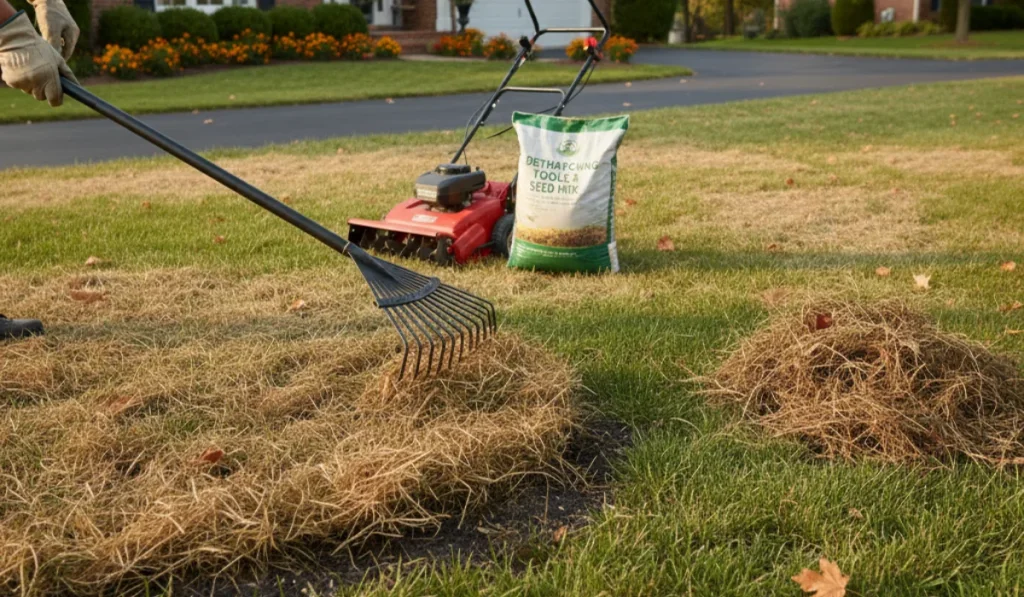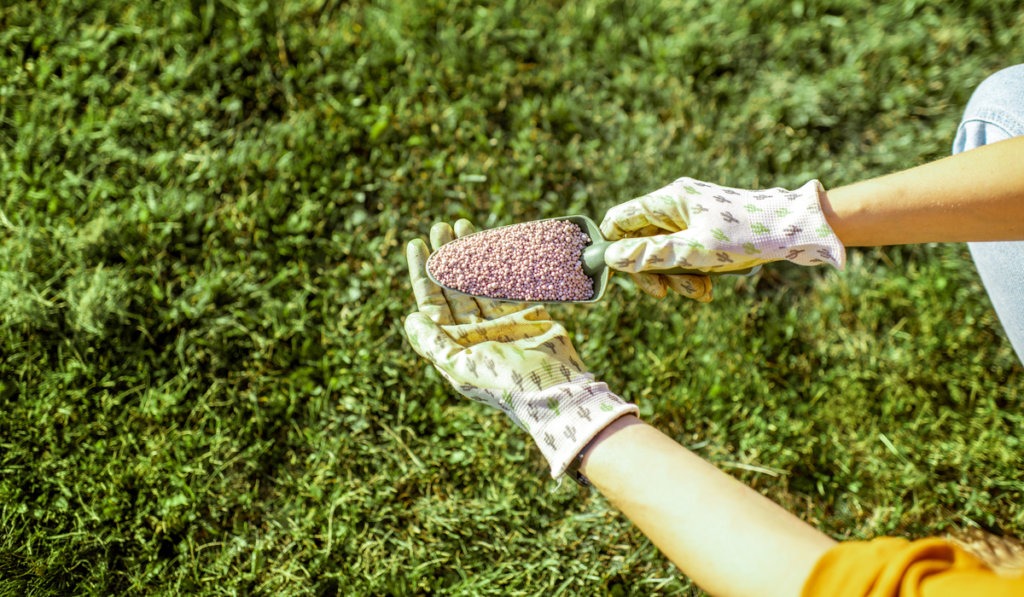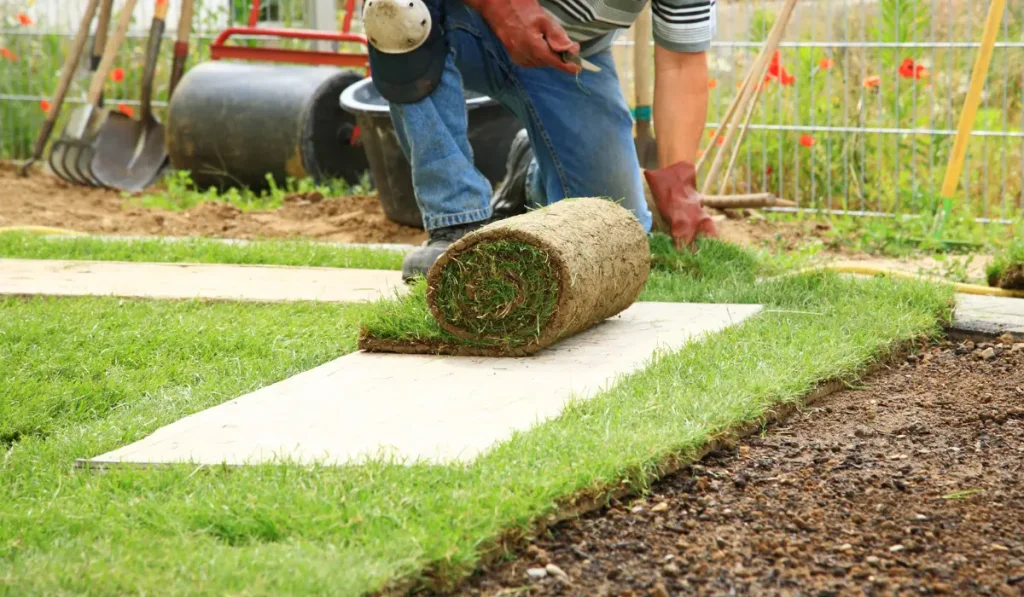Mowing the lawn might be on your weekend to-do list, but what happens when the sky decides to open up? While mowing your lawn during or after rain might seem harmless, it’s generally not a good idea. Here’s why mowing a wet lawn can cause more harm than good, and what you should do instead.
Key Takeaways
- Wet grass leads to uneven cuts, soil compaction, and a higher risk of spreading lawn diseases.
- Mowing wet grass can clog your mower, dull the blades, and cause long-term damage to the equipment.
- Letting the lawn dry first helps avoid clumping clippings and keeps your grass healthier and easier to mow.
- Planning around the weather and improving drainage makes lawn care easier, even during rainy seasons.
Why You Shouldn’t Mow Wet Grass
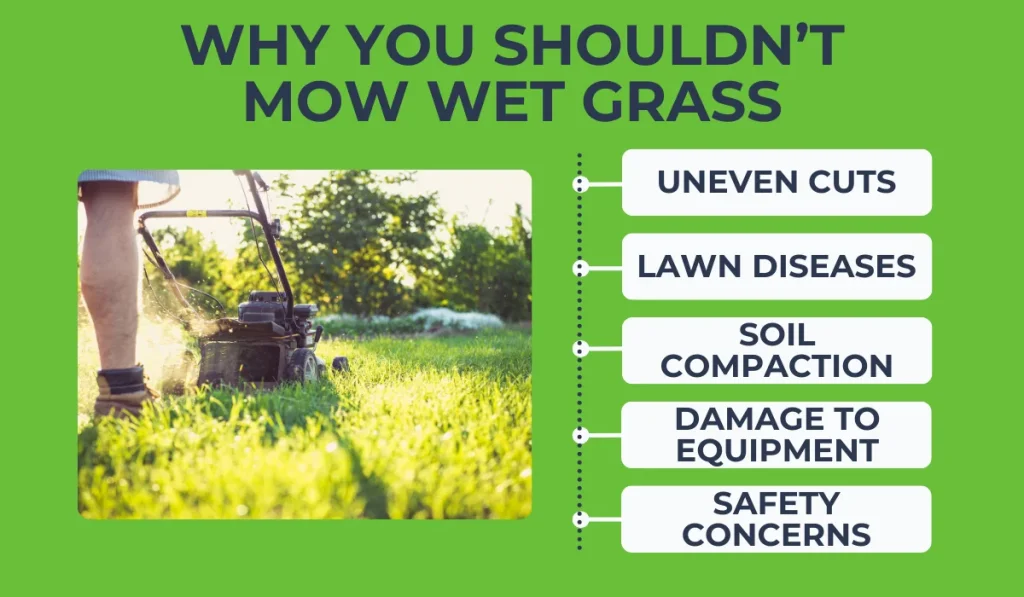
Mowing wet grass can lead to several issues that affect your lawn’s health and safety:
1. Uneven Cuts
Wet grass doesn’t stand up straight, making it hard for mower blades to deliver a clean cut. Instead, you’re left with unevenly trimmed grass that can look patchy and affect overall growth.
2. Lawn Diseases
Wet conditions are breeding grounds for fungal diseases, such as brown patches or dollar spots. Cutting wet grass in damp weather increases the risk of spreading these lawn diseases, especially if your mower blades aren’t clean or sharp.
3. Soil Compaction
Mowing on soggy soil compacts it, which can suffocate grass roots and prevent them from absorbing nutrients and water. Over time, this can lead to a weaker lawn that struggles to thrive.
4. Damage to Equipment
Grass clippings can stick to your mower deck, clogging the blades and decreasing efficiency. Wet grass clippings can also lead to rust on metal components, reducing the lifespan of your mower.
5. Safety Concerns
Wet grass is slippery, which increases the risk of accidents, especially with push mowers or electric models. The combination of water and electricity can also be dangerous when using an electric mower in wet conditions.
How to Handle a Rainy Day Lawn
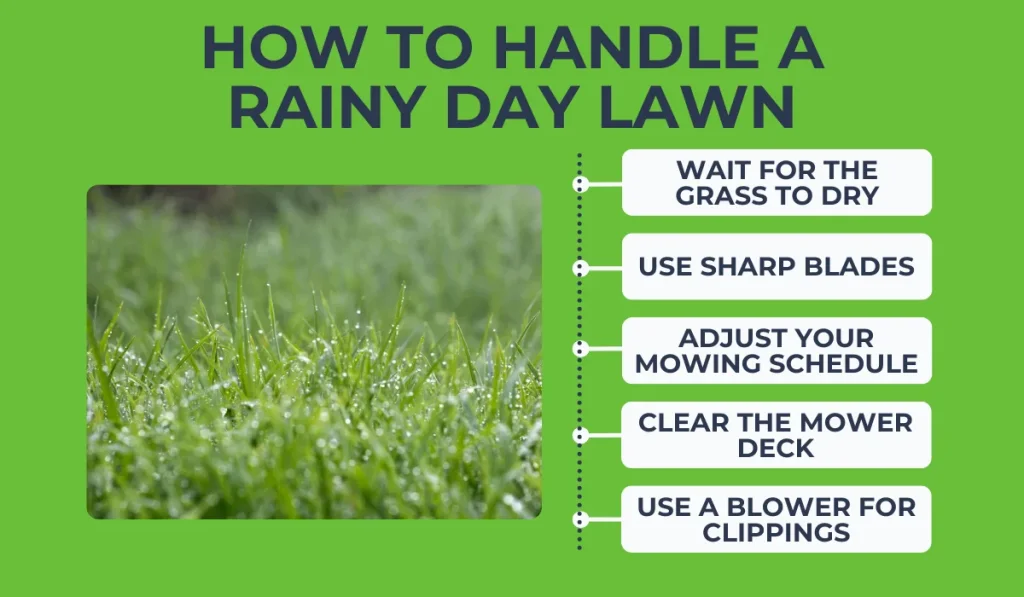
If your lawn needs mowing but the weather isn’t cooperating, here’s how to manage the situation:
Wait for the Grass to Dry
Whenever possible, wait for your lawn to dry out before mowing. This is especially true after heavy rain or when the grass feels spongy underfoot.
Use Sharp Blades
Sharp lawn mower blades are essential for a clean cut, even when the grass is slightly damp. Dull blades tear the grass instead of cutting it, leaving jagged edges that are more prone to disease.
Adjust Your Mowing Schedule
Mow a lawn with dry grass, typically during the mid-morning or early evening after the morning dew has evaporated but before it gets too humid.
Clear the Mower Deck
If you must mow damp grass, regularly check and clear your cutting deck to prevent clogs. Mulching mowers can also struggle with wet grass, so emptying the bag more often may help.
Rake or Use a Blower for Clippings
Wet clippings can clump together and smother your grass. Use a rake or leaf blower to spread them evenly or remove them entirely.
Plan Ahead for Rainy Weather
Taking proactive steps can reduce the impact of rain on your mowing schedule:
- Install Sprinklers with Timers: This allows you to control watering schedules and avoid overlapping with natural rainfall.
- Choose Resilient Varieties: Grass types like Bermuda or Zoysia are more tolerant of wet conditions and recover quickly from damage.
- Improve Lawn Drainage: Consider installing a French drain or grading your yard to prevent water from pooling.
Mowing in the rain might save you time in the short term, but it can damage your lawn and mower in the long term.
Instead, prioritize mowing during dry conditions to maintain a healthy, vibrant lawn. When in doubt, focus on other aspects of lawn care until the rain clears up.

